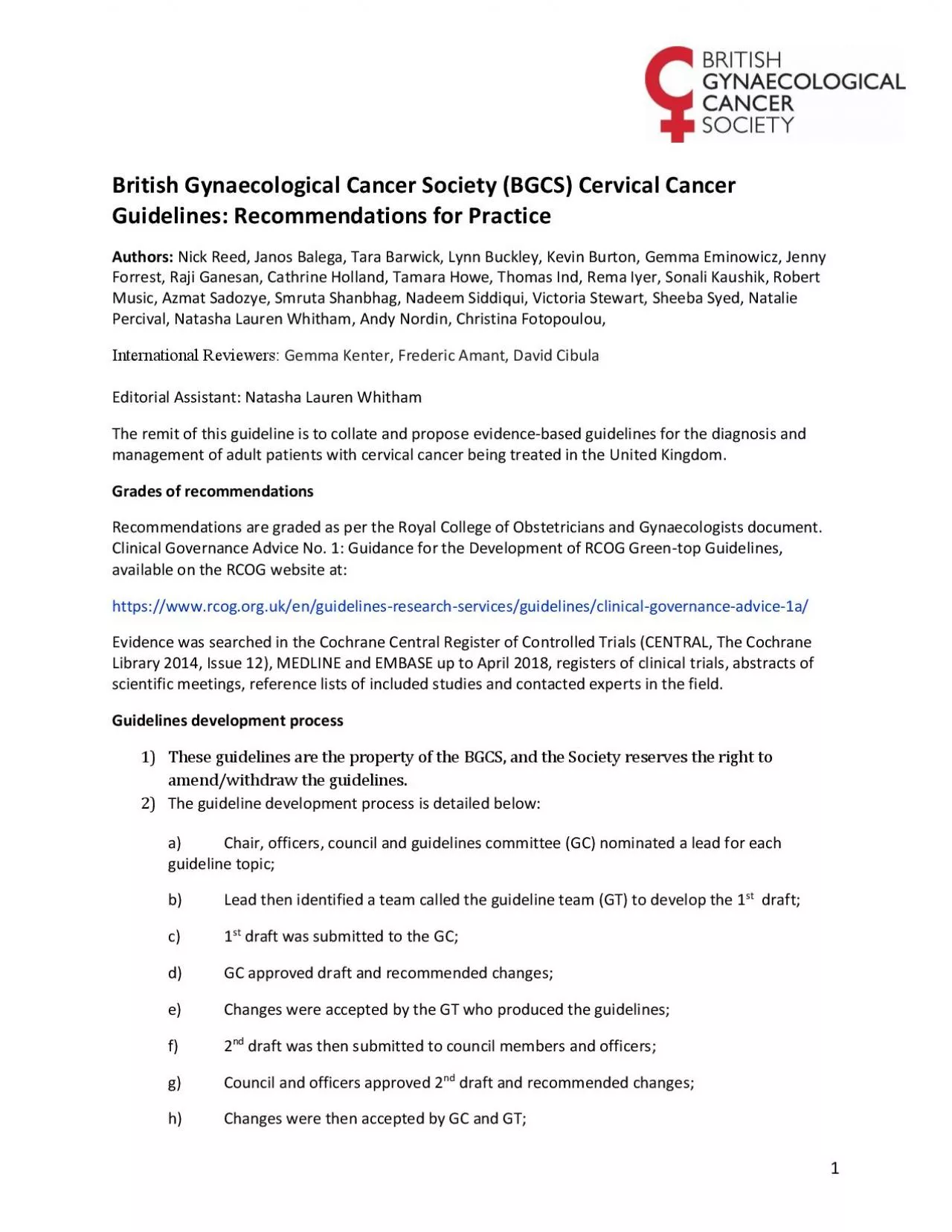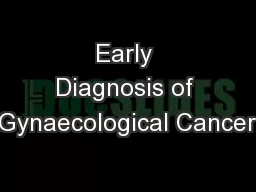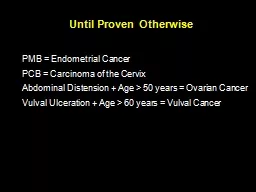PDF-British Gynaecological Cancer Society BGCS Cer
Author : byrne | Published Date : 2022-08-20
1 vical Cancer Guidelines Recommendations for Practice Authors Nick Reed Janos Balega Tara Barwick Lynn Buckley Kevin Burton Gemma Eminowicz Jenny Forrest Raji Ganesan
Presentation Embed Code
Download Presentation
Download Presentation The PPT/PDF document "British Gynaecological Cancer Society BG..." is the property of its rightful owner. Permission is granted to download and print the materials on this website for personal, non-commercial use only, and to display it on your personal computer provided you do not modify the materials and that you retain all copyright notices contained in the materials. By downloading content from our website, you accept the terms of this agreement.
British Gynaecological Cancer Society BGCS Cer: Transcript
Download Rules Of Document
"British Gynaecological Cancer Society BGCS Cer"The content belongs to its owner. You may download and print it for personal use, without modification, and keep all copyright notices. By downloading, you agree to these terms.
Related Documents














